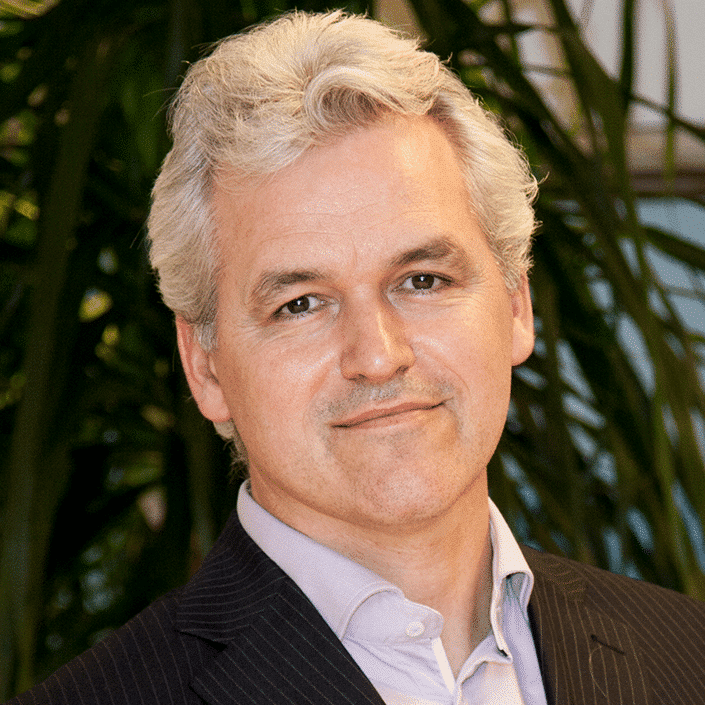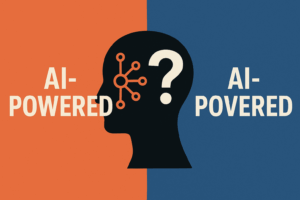Beyond Value Creation
In today’s dominant business paradigm, customer value creation is often held up as the gold standard of success. Yet beneath the surface, a critical question emerges: Is this value truly being created for customers—or merely through them?
Too often, what passes for “value creation” is in fact a thinly veiled mechanism for value extraction—optimizing customer touchpoints not to serve human or ecological wellbeing, but to maximize short-term shareholder returns. In this model, customers are instrumentalized, ecosystems are externalized, and relationships are reduced to transactions.
But can a system built on asymmetrical gain—where a few extract disproportionate benefit from the many—ever be truly sustainable or equitable?
As ecological thresholds are breached and social fabrics fray, it’s clear we need a fundamental shift: from egoistic value extraction to shared value regeneration. Not just a new strategy, but a new logic.
To move beyond extractive business logic and toward ecosystems that are socially equitable and ecologically resilient, we must reimagine how value is created, circulated, and sustained. Shared Value Regeneration offers such a framework. It consists of three interdependent elements:
the Shared Value Circle (SVC), which provides the structural foundation for collaborative value creation among stakeholders;
the Shared Value Lifecycle (SVL), which captures the recursive, dynamic flow of contributions and returns within and across these relationships; and
the Shared Value Multiplier (SVM), which expresses the compounded impact of this regenerative exchange across economic, social, and ecological dimensions.
Together, these three components form a regenerative architecture—one that replaces linear extraction with cyclical renewal, and isolated profit with collective thriving. In what follows, we’ll explore each element of the Triad in more depth.
I. Shared Value Circle (SVC) — The Structure of Regenerative Value Creation
At the heart of regenerative value creation lies the Shared Value Circle — a structural configuration where multiple, interdependent stakeholders come together with the purpose of co-creating, exchanging, and sustaining value over time.
Rather than operating in silos or transactional relationships, participants in a Shared Value Circle are bound by mutual trust, transparency, and a shared sense of purpose. These Circles define both the “who” (the actors involved) and the “where” (the context and space) in which collaborative value creation occurs.
More than a fixed structure, a Shared Value Circle is adaptive and evolving:
It can expand or contract as needs change.
It may be nested within larger ecosystems or overlap with other Circles, creating a living network of collaboration.
It holds space for open dialogue, mutual learning, and reciprocal exchange, allowing stakeholders to align their intentions and contributions.
In practical terms, Shared Value Circles can take the form of cross-functional innovation teams, local cooperatives, regenerative supply networks, or community alliances — any configuration where value is co-developed through relationships rather than transactions.
It serves as the structural container for regenerative exchange: without it, cycles cannot flow, and shared value cannot compound.
II. Shared Value Lifecycle (SVL) — The Flow of Regenerative Dynamics
The Shared Value Lifecycle describes the dynamic flow of value within a Shared Value Circle — illustrating how contributions from stakeholders evolve through various stages to generate outcomes that are not only beneficial, but also regenerative.
Rather than following a linear path from input to output, the SVL unfolds through a series of interconnected phases:
Stakeholders contribute resources, knowledge, care, or energy;
These inputs are integrated into meaningful products, services, or shared experiences;
The resulting value is circulated across the ecosystem;
Portions of that value are reinvested, strengthening the relationships and resources that made it possible;
Through continuous evolution, the system learns, adapts, and grows in resilience.
The SVL enables feedback, responsiveness, and renewal, ensuring that the Circle remains vibrant, relevant, and capable of evolving over time.
Much like lifecycles in nature, this process emphasizes regeneration over depletion, reciprocity over extraction, and growth through iteration rather than expansion through exploitation. It is the energetic rhythm that sustains the Circle and allows shared value to compound across the ecosystem.
III. Shared Value Multiplier (SVM) — The Amplified Impact of Regenerative Exchange
The Shared Value Multiplier expresses the compounded impact that emerges when value is co-created, circulated, and reinvested within a vibrant Shared Value Lifecycle. It reflects not just the quantity of value generated, but the quality and inclusivity of its effects across the ecosystem.
Rather than measuring success through isolated metrics like profit or efficiency, the SVM reveals how regenerative value creation results in multi-dimensional outcomes — economic, social, ecological, and relational. It considers how value expands when contributions are reciprocated, aligned with shared purpose, and reinvested for mutual benefit.
The strength of the Multiplier depends on the diversity of contributions, the depth of trust and alignment within the Circle, and the vitality of the Lifecycle. When these conditions are met, shared value doesn’t just sustain — it grows, ripples outward, and reinforces the wellbeing of the entire system.
The SVM helps organizations shift from short-term gains to long-term, distributed prosperity. It invites us to assess impact not only by what is gained, but by what is regenerated, restored, and shared.
Case in Point: Patagonia — A Regenerative Business in Action
Although Shared Value Regeneration wasn’t available to them as a framework, the outdoor apparel company Patagonia provides a powerful real-world example of how these principles can manifest in practice.
Shared Value Circle (SVC) – Structural Collaboration
Patagonia has intentionally cultivated deep, trust-based relationships with a wide range of stakeholders — from regenerative cotton farmers and Fair Trade factory workers to environmental nonprofits and its own customer community. These actors don’t function in isolation but operate as a circle of interdependent contributors, aligned around shared values such as environmental stewardship, social justice, and product durability.
Rather than maximizing shareholder value alone, Patagonia’s structural model is grounded in stakeholder alignment — evidenced by its 2022 decision to transfer ownership to a trust and nonprofit dedicated to protecting the planet. This shift turned the company into a structural vessel for collective action, enabling all stakeholders to co-create lasting value together.
Shared Value Lifecycle (SVL) – Dynamic Flow
Patagonia’s value creation process mirrors a regenerative lifecycle. It begins with conscious contribution — sourcing sustainable, often regenerative materials — and continues through responsible manufacturing, customer education, repair and reuse programs, and finally, reinvestment in environmental activism.
Their “Worn Wear” program exemplifies the reinvestment phase, turning used products into new stories and sustaining value far beyond a single transaction. Simultaneously, the company listens to feedback from partners, customers, and the natural environment — adapting its operations through continuous learning. This flow keeps the value alive, relevant, and renewing.
Shared Value Multiplier (SVM) – Amplified Impact
The compounded impact of Patagonia’s model goes far beyond product sales. It has helped elevate regenerative agriculture, educate consumers, inspire corporate activism, and fund grassroots environmental efforts worldwide. By designing its business model around reciprocal benefit and ecological integrity, Patagonia has become a catalyst for systemic change — proving that regeneration and profitability can coexist.
Their Multiplier is not just financial; it’s ecological (restored soils), social (fair wages and safe labor), and cultural (a shift in how business defines success).
Summary
While Patagonia didn’t name it as such, its evolution illustrates the power of Shared Value Regeneration in action:
It built a strong Shared Value Circle by embedding stakeholder collaboration into its governance — culminating in the 2022 transfer of ownership to a trust and nonprofit, ensuring all future profits (~$100 million annually) are directed to planet-positive initiatives.
It activated a Shared Value Lifecycle through programs like Worn Wear, Fair Trade sourcing, and regenerative agriculture partnerships — extending product life, reducing costs of raw inputs, and deepening customer loyalty.
It has generated a powerful Shared Value Multiplier: not just in ecological restoration and brand trust, but in tangible financial outcomes — including surpassing $1 billion in annual revenue, high customer retention, and attracting top talent without excessive salary competition.
These results suggest that shifting from singular value extraction to regenerative value creation can enhance long-term profitability, reduce reputational risk, lower resource dependency, and mobilize aligned capital.
In Patagonia’s case, regeneration isn’t a marketing layer — it’s a business model that compounds value for people, planet, and the company itself.
Author
-
Edwin Korver is a polymath celebrated for his mastery of systems thinking and integral philosophy, particularly in intricate business transformations. His company, CROSS/SILO, embodies his unwavering belief in the interdependence of stakeholders and the pivotal role of value creation in fostering growth, complemented by the power of storytelling to convey that value. Edwin pioneered the RoundMap®, an all-encompassing business framework. He envisions a future where business harmonizes profit with compassion, common sense, and EQuitability, a vision he explores further in his forthcoming book, "Leading from the Whole."
View all posts Creator of RoundMap® | CEO, CROSS-SILO.COM





